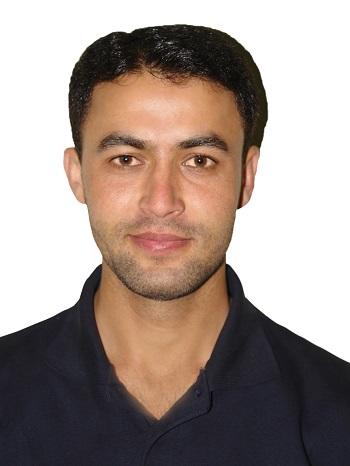Noor Agha Noori M.phil.

Languages and Cultures of the Silk Road
Vorderasiatische Archäologie
Institut für Vorderasiatische Archäologie
Fabeckstr. 23/25
14195 Berlin
05/2017 – 03/2020
Acting Project Director, Mes Aynak Archaeological Program, Afghanistan
03/2017 – 09/2021
Director, Archaeological Institute of Afghanistan (AIA)
11/2016 – 02/2017
Field Director, Mes Aynak Archaeological Project, Afghanistan
2015 – 2017
M.Phil in Archaeology, Hazara University Mansehra, Pakistan
10/2012 – 10/2016
Assistant Curator at National Museum of Afghanistan
2007 – 2011
BS (Hons) in Archaeology, Hazara University Mansehra, Pakistan
The cultural sequence of Buddhist sites in the Kabul region
Recent archaeological explorations confirm that Afghanistan is a complex region which substantially influenced the development of many civilizations and its vicinity in South and Central Asia. In late antique to Early Medieval times, the region was also an important meeting point of several religions and many goods were traded along the Silk Road. Due to its important geographical location as a crossing point, many powerful empires tried to occupy the area and expand from there to neighboring countries. This has left significant traces on local cultures, religion, art, customs and politics in Afghanistan’s (pre-) historical remains. This amalgamation of cultures opened new ways for connecting people from different parts of the Asian world. Archaeological evidence has revealed that as far back as the 7th Millennium BCE, particularly during the Bronze Age, some raw material such as lapis lazuli and tin were exported from Afghanistan to other major ancient civilizations like Mesopotamia, Egypt and the Indus Valley where they were used for purposes.
Recent, "pre-Taliban II" archaeological explorations and excavations in Afghanistan since 2010 have resulted the discovery of new important sites from Buddhist times (2nd Century BC-8TH Century CE); Mes Aynak in Logar, Khum-e-Zargar in the Kapisa region, Shewaki, Tape Narinj and Tape Maranjan in Kabul province, and Tope Dara in Parwan province. All of these sites are located along the ancient Silk Road that connects Mediterranean world, ancient Iran and China. The Archaeology Institute of Afghanistan (AIA) under my supervision (between 2017-2021) has initiated safeguarding and excavation projects in various parts of the country, particularly at the above-mentioned sites which have yielded vital archaeological information; however, the Institute efforts also included increasing local awareness and involvement of local communities in heritage safeguarding. The proposed doctoral research will focus on the results of these recent activities in detail, with first-hand and fresh information. Furthermore, I will analyze the role of local communities in the preservation and protection of heritage, particularly archaeological heritage. Considering the current political situation in Afghanistan by a religious ideology, I will describe their intent in regard to cultural heritage in a short and long term basis as well as its consequences for local people.
In the proposed PhD research, I will focus on the archaeological findings discovered during excavations and surveys at the following sites:
- Mes Ayak archaeological site
- Tope Dara Archaeological site
- Khumzargar Archaeological site
- Shewaki Archaeological Site
- Tape-Maranjan Archaeological Site
- Tape-Narinj Archaeological
Although, the sites of Khumzargar, Tope Dara and Shewaki are well documented contextualy while the site of Mes Aynak, Tape Narinj and Tape Maranjan are not well documented but the available data is sufficient for the contextual analysis. These mobile finds can be divided into different categories, such as pottery, coins, statuary, etc., as listed below under "methodology". These categories will be further divided into sub-categories in order to produce a detailed catalogue.
2021
Noori. NA, Wafa. A & Rohullah. A, 2021, “Excavation Report of Tope Dara Archaeological Site, Parwan Province, Kabul, Afghanistan
2019
Luca.M. Olivieri, E. Lori, Noori. NA, 2019 Fashion Ware in Mes Aynak, Logar: Chronology and comparison (with an Appendix on a single specimen of tulip-bowl from Site MA-100, Afghanistan, pp. 92-115, Edinburgh University Press
2018
Noori. NA, 2018, “Fifty years of field work and Archaeological Investigations in Afghanistan”, Cultural Heritage of Afghanistan, Print Point Press, Kabul
2017
NA Noori, Latify, AH, T. Abawi, & S. Annen. "Panel Session: Museums as Instruments of Cultural Heritage Preservation." In Preserving the Cultural Heritage of Afghanistan, Proceedings of the Oriental Institute of the University of Chicago – Ministry of Information and Culture of Afghanistan International Conference Held at the Afghanistan Center at Kabul University, November 9-11, 2014, Stein, G. et al ., eds., University of Chicago Press, Chicago, 2017.
